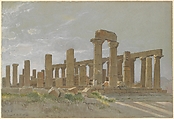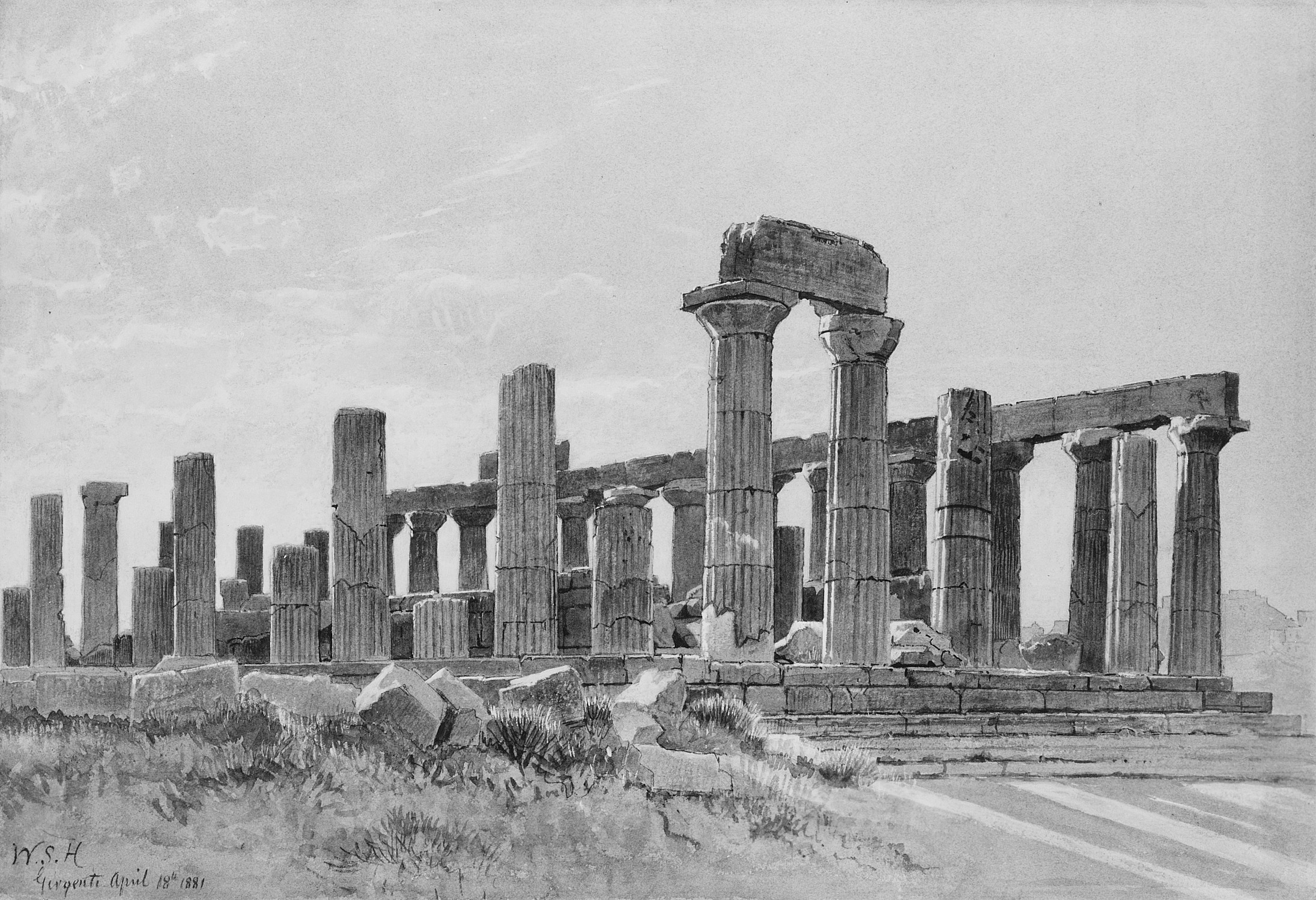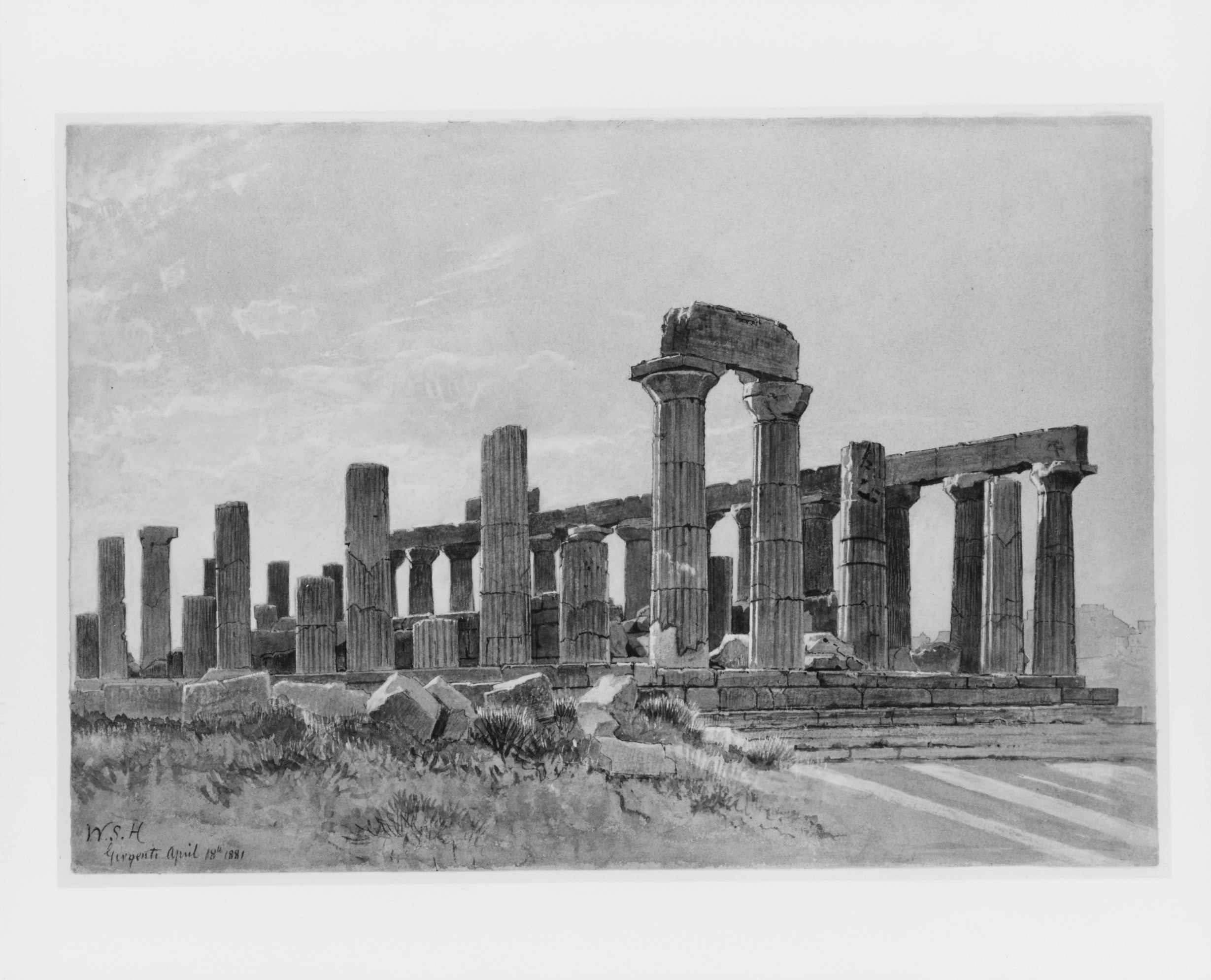Girgenti (The Temple of Juno Lacinia at Agrigentum)
William Stanley Haseltine American
Not on view
In the 1870s, while living and working in Rome, Haseltine’s watercolor technique shifted away from nearly monochromatic images made in preparation for oil paintings to more fully realized watercolors made for exhibition. During one of three visits to the island of Sicily in 1881, he painted this near view of the Temple of Juno Lacinia (480–500 b.c.) in Girgenti (present-day Agrigento). At center, he emphasizes the ruin’s most eloquent feature: the single fragment of architrave supported by two intact columns at the southeast corner of the temple. Essential to his composition is the glowing afternoon Mediterranean light that illuminates the edges of the monument and casts long shadows.
Due to rights restrictions, this image cannot be enlarged, viewed at full screen, or downloaded.
This artwork is meant to be viewed from right to left. Scroll left to view more.




